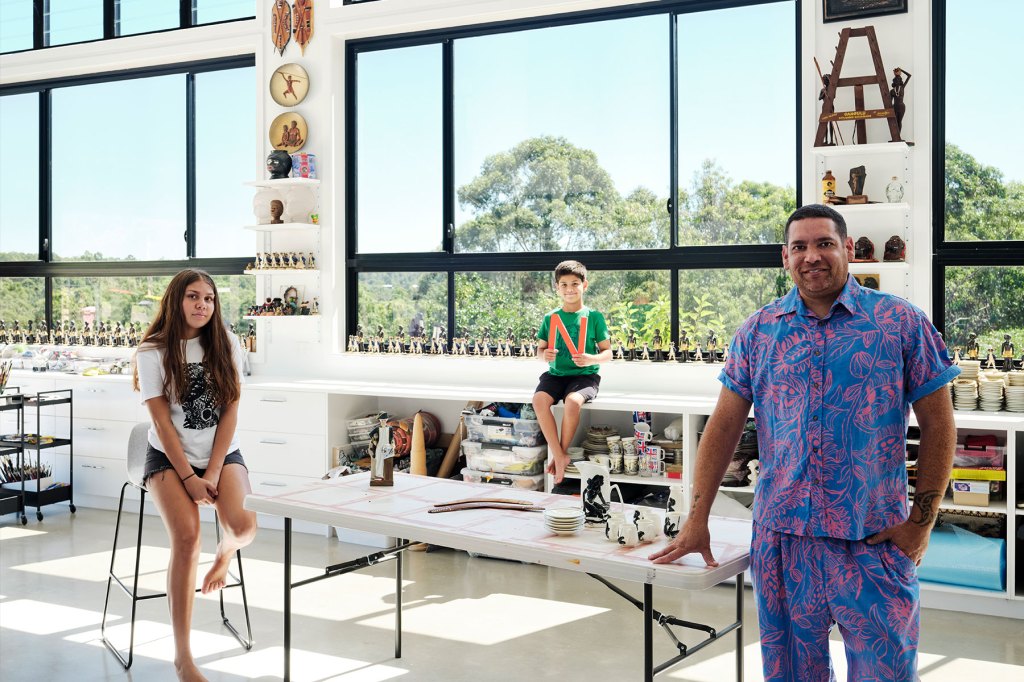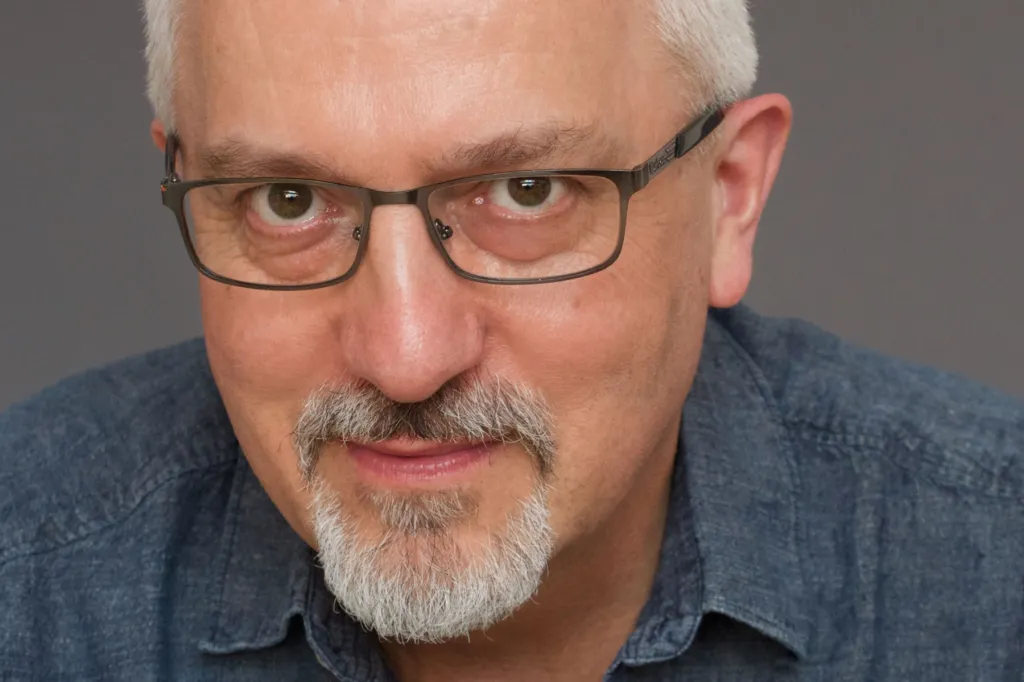Anything goes: The fine art of collecting …
A new book from Thames & Hudson looks at the art of collecting and the creative Aussies who fill their lives and homes with art and arty collectables.

Queensland artist Tony Albert started collecting early and in the most unlikely of places.
“When I was growing up, Smurf figurines were distributed through BP petrol stations in Australia, so every time Mum or Dad got fuel, I got a Smurf. This was my entry into collecting – an attainable opportunity representing variation and difference, started this love affair.”
Albert didn’t grow up with art in his life.
“I remember Mum and Dad won a painting in a raffle once. A hideous 1980s paint-by-numbers landscape – we just thought it was the most beautiful, incredible thing. It was the only artwork we every owned and it took pride of place in the family room.”
But his innate love of art and collecting was nurtured.
“I had a family that supported this wacky child that had vitrine-like shelves in his room. I displayed things, I didn’t play with them. [It] led me to art, and to artists like Tracey Moffatt and Gordon Bennett in particular, who completely blew my mind and made me realise the power of art and its ability to tell stories and open up discussions.”
Albert’s own acclaimed art practice leverages his extraordinary collection of Aboriginalia (kitsch objects and images that feature portrayals of Aboriginal people and cultural materials), which he also began collecting as a child.
“Our life was fully engaged with and immersed in second-hand shops and I came across this ephemera, which I loved. It was my culture and I was convinced that getting your image on a plate or an ashtray was something special. I had a very innocent understanding of what I was actually looking at. The only way I can continue to do what I do today is to reflect on the fact that this collecting came from a place of love and by thinking back to that child who looked at these objects with the greatest affection.”
You might like
Despite his early love of art and collecting, Albert didn’t have a personal art collection for a long time.
“Even when I started working at the Queensland Art Gallery when I was 20, I never thought you could buy art for your home. I had never considered it was possible to own art. I had seen and learned about amazing art institutions and saw them as an extension of our living rooms. I had a sense of belonging to them, as a member of the public. I was very content to visit these places and be educated through them.”
Albert was introduced to the possibility of living with art through friends and the local gallery scene.
“I went to the [former] Bellas Milani Gallery’s Christmas show – one night only, with contributions from all their artists. It was the first time I realised I could own a Gordon Bennett.”
That Bennett now hangs in Albert’s stairwell.
“If the house was on fire, I would grab this, just because of how important Gordon was in my life.”
This kind of emotional connection underpins everything in Albert’s home. Albert also has a collection of mostly contemporary Australian art. Returning to Brisbane from Sydney in 2020 and buying a large home for his extended family gave him the opportunity not only to build his dream studio, but to finally unpack his collections.
“Finding this place, setting everything up, I strongly believe this is my forever home.”

.
For Albert, artworks are akin to music. They bring back memories of where and when he found them and of his relationship to the artist.
Subscribe for updates
“I don’t think there’s any work in my collection from an artist I don’t actually know.”
Many of the artists he collects – like Gemma Smith, Natalya Hughes and Richard Bell – are also his friends. He went to Smith’s first show at Milani Gallery and bought a stunning-coloured Perspex sculpture.
“I come home with the most impractical things for a crowded home. You had to shimmy around it as you navigated my tiny house. But that’s just how it had to be!”
The Hermannsburg pots by the front door also speak to Albert’s investment in relationships.
“Nearly every year I visited Hermannsburg, and every time I got a pot, and now I have 20. You wouldn’t just go there and buy 20 pots – that’s not how you collect. It takes time to build those relationships.”
Albert has collected widely and generously. Among works by fellow members of the contemporary Aboriginal Artist Collective proppaNOW – Richard Bell, Megan Cope, Vernon Ah Kee and Gordon Hookey – there are works that were bought or swapped by Daniel Boyd, Eugene Carchesio, Casey Chen, Tjanpi Desert Weavers, Vincent Namatjira, Marikit Santiago, Julie Rrap, Grace Robinya, Marc Etherington, Gonkar Gyatso, Jemima Wyman, Julia Gutman, Sarah Contos, Vipoo Srivilasa and many others.
“I’ve always had a soft spot for younger, emerging artists with a genuine commitment to what they’re doing. I was that artist. When I see they need support, that’s where I want to put my money. It’s also recognising artists who don’t yet seem to fit in, or whose life is not about fitting in. Outsiders work harder than anyone else – in a way, the nature of what they do dictates that.”
There have been times when Albert wished there was more of a premise holding his collection together, but it makes sense to him and that’s enough.
“‘I like to think that it’s based on moments in time – it’s about having been present. I am often aware that if I impulse buy art, I’m going to struggle financially for a few weeks – or longer – but I’m going to have that art forever. It will ultimately nourish me more than food would.”
This is an extract from Collecting: Living with Art published by Thames & Hudson, $79.99. Words by Kym Elphinstone and Jo Higgins; photography by Dave Wheeler.
thamesandhudson.com.au/product/collecting-living-with-art
The book’s featured collectors are: Penelope Seidler, Amanda Love, Dr Gene Sherman AM, Tony Albert, Ramesh Mario Nithiyendran, Angela Tiatia, Mason Kimber and Mariam Arcilla, Lottie Consalvo and James Drinkwater, Miranda Skoczek, Nabilah Nordin and Nick Modrewzski, Jonny Niesche, Sue Cato, Naomi Tosic, Michael Do, Ben Mazey, Andy Kelly and Mitchell Zuerk, Peter Wilson and James Emmett, Tamsin and Patrick Johnson, Stephanie Grose, Sue Cato and Vaughan Busby, Louise Marshall, Nick Tobias and Ronan Sulich.
The voices of the collectors demonstrate how art can transform a space and turn it into a sanctuary of self-expression – often, in the process, having a transformative effect on the collectors themselves. Featuring a diverse mix of bold abstract works, figurative painting, contemporary photography, sculpture and mid-century masterpieces, Collecting is a powerful testament to the beauty and individuality of creating a home filled with meaning and inspiration.

